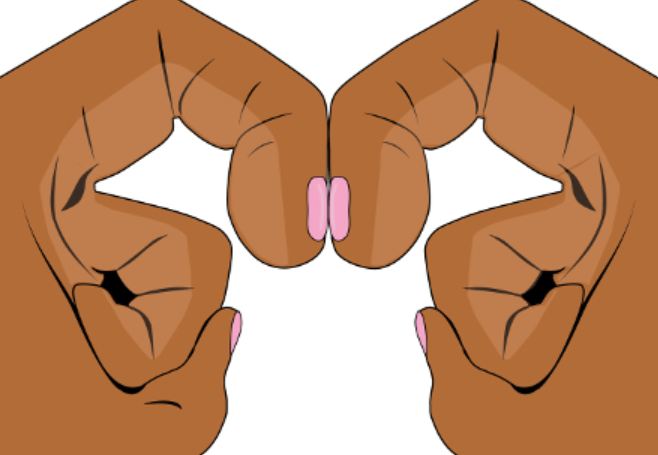The simple 'finger trick' that could 'diagnose' lung cancer
Few of us link our hands to our lungs.
However, an expert has revealed a simple “finger trick” could uncover any respiratory tumours.
READ MORE: The Stages of Lung Cancer, Explained
Emma Norton, oncology nurse advisor at Bupa UK, is calling on people to place the nails of their index fingers together, as if making the top of a heart.

Most see a diamond-shaped gap between the nails. If this is missing, it could be a sign of “finger clubbing”, she warns.
This seemingly unusual symptom occurs in up to 35% of lung-cancer patients, according to Cancer Research UK.
“Most people with lung cancer don’t know their fingers are clubbing unless they know specifically to look out for it”, Ms Norton told HuffPost.
“The test is used by medical professionals as a partial method of confirming conditions, but you can also do the test yourself, and it only takes a few seconds.

READ MORE: Patient samples show signs of lung cancer spread
“If you can’t see any kind of gap beneath your nail beds, this means your fingers are clubbed”.
Ms Norton recommends “sufferers” see their GP as soon as possible.
While it may be easy to panic, clubbed fingers often run in families.
What is finger clubbing?
“Clubbing” describes changes to the shape of the fingers and nails.
It usually starts with the nail bed becoming soft and the surrounding skin shiny.
The nail then looks more curved when viewed from the side.
READ MORE: What Is Lung Cancer’s Survival Rate?
Finally, the ends of the digits may become larger, known as “drumstick fingers”.
In severe cases, extra areas of bone may form on the fingers, wrists or ankles. Often mistaken for arthritis, this is known as hypertrophic pulmonary osteoarthropathy.
Finger clubbing tends to be painless and can affect just one finger, BMJ Best Practice reported.
How does lung cancer cause fingers to “club”?
Exactly why finger clubbing occurs is unclear. It is thought to be caused by fluid collecting in the soft tissues at the end of digits, Cancer Research UK reports.
This may come about due to greater blood flow to the area, or the chemicals or hormones released by tumours.
Low oxygen levels in the blood may also trigger the release of the protein “vascular endothelial growth factor”, according to BMJ Best Practice.
This can lead to swelling and cell division at the “peripheral level in the nails”.
READ MORE: How I Got Lung Cancer at 31 - Without Ever Smoking
Finger clubbing is most often associated with lung cancer.
It affects more than 35% of those with non small cell lung cancer, which makes up 87% of cases of the disease in the UK, Cancer Research UK reports.
Among the rarer small cell lung cancer, which affects 12% of patients, 4% of patients have finger clubbing.
Spotting clubbed fingers could help doctors diagnose the disease earlier.
Around three quarters of lung-cancer sufferers in England, Scotland and Northern Ireland only discover they have the disease at a late stage, Cancer Research UK statistics show.
Vague symptoms are thought to be to blame, which generally include a persistent cough, recurrent chest infection and breathlessness.
There is also no lung cancer screening programme in the UK or US due to the risk of over-diagnosis or even damage from the radiation.
As well as involving the lungs, finger clubbing can also affect those with “heart problems”, according to Cancer Research UK.
And Patient.info links it to everything from tuberculosis and Crohn’s disease to liver scarring and skin disorders.


